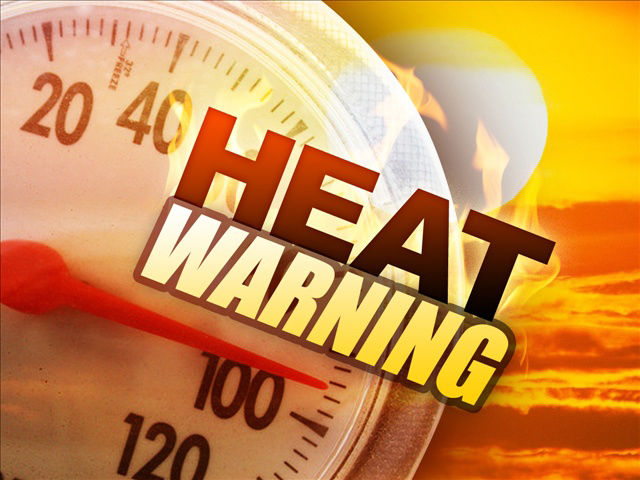HARLINGEN — The numbers are in, and they don’t lie.
April was hot.
Above-average temperatures in the Rio Grande Valley have been occurring for the past 10 months, and the only difference in April was it didn’t set any all-time records for monthly heat.
The average mean temperature recorded at McAllen/Miller International Airport was 81.0 degrees for the month, which ranks second all-time after April 2011.
At Brownsville, the average mean April temperature was 78.6 degrees, which ranks seventh all-time.
For Harlingen, the average mean for the month was 77.1 degrees, good enough for a ranking of 13th all-time.
“The year 2016 was one of the warmest years that we’ve had, not just locally but nationally as well as globally,” said Geoff Bogorad, senior forecaster at the National Weather Service in Brownsville.
“This is just a continuation of the extremes that we’ve been seeing as of late,” Bogorad said yesterday.
The last week of April was record-breaking hot, with three of the final days of the week reaching the 100-degree mark. A Valley-wide 100-plus spike on April 26 set all-time records in Harlingen and Brownsville (both 104 degrees) while McAllen reached 105 degrees. That was two degrees off the city’s all-time record for the date.
But April provided a break of sorts for McAllen. Each of the first three months of the year saw record-breaking monthly mean high temperatures there, but the 81.0 degrees for April 2017 only ranked No. 2 all-time.
There were other weather events in April which were noteworthy, such as the fast-breaking hailstorms in northern Cameron and Willacy counties on April 2. On April 29, an explosive hailstorm over Zapata County ranchlands reportedly produced hail the size of baseballs, the weather service said.
“We did have a little break at the beginning of the year with some rainfall but not enough and it’s really warmed up exceptionally in the last six weeks since we haven’t had much rain across the area,” Bogorad said.
Brownsville received just 0.63 inches of rain in April (normal is 1.54 inches), and Harlingen recorded just 0.87 inches (1.67 inches is average.)
For the year, Brownsville has received just 4.01 inches of rain this year (average is 5.12 inches), and Harlingen has recorded precipitation of just 4.40 inches (average is 5.43 inches).
McAllen recorded just 0.73 inches of rainfall in April (average is 1.34 inches), but for the year has recorded 4.88 inches of rain (average is 4.53 inches).
If you think it’s your imagination that the days seem hotter when it’s really dry, Bogorad said you’re wrong.
“It does help accelerate this warming a little bit because the ground is so dry it just reflects the temperature,” he said. “There’s no moisture in the soil to absorb the heat to keep it down, so the dry soil just allows it to be warmer.”
The Keetch-Byram Drought Index used at the Texas A&M Forest Service rates drought on levels of 0-200, 200-400, 400-600 and 600-800 being highest.
At the highest drought rating, characterized as severe, wildfire occurrences with intense, deep-burning fires increases. At 400-600, wildfire intensity begins to increase and fires of several days or longer are common. These conditions usually are not seen until late summer or early fall.
The index currently rates the eastern half of Cameron County at 600-700 and the western half at 500-600.
Most of Hidalgo County rates in the 500-600 range with the exception of pockets along the southern part of the county along the Rio Grande, where the index range also is 600-700.




